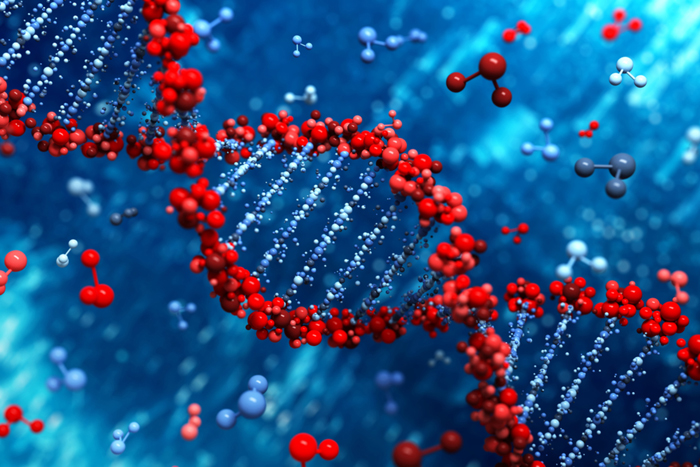
What If Doctors Could Heal Broken Genes? (Op-Ed)

Katrine Bosley is CEO, and Sandra Glucksmann COO, of Editas Medicine, a genome editing company targeting treatment of genetic diseases. The company was founded by pioneers in the field who have specific expertise in CRISPR/Cas9 and TALE technologies. World Economic Forum Technology Pioneers, class of 2015. The authors contributed this article to Live Science's Expert Voices: Op-Ed & Insights.
Science is about asking questions. Sixty years ago, the key question in biology was, "What does the human genetic code look like?" That was followed by, "How many genes make up human DNA?" which itself led to, "Which genes cause diseases ?" Now the question is, "What if doctors could repair broken genes?"
For decades, doctors and scientists have wanted to correct disease-causing mistakes in patients' DNA. A new technology called genome editing brings the world closer to making that goal a reality.
Repairing DNA
Today, medicine recognizes more than 5,000 genetic diseases caused by mistakes in DNA, and the majority of these illnesses have no cure or treatments. These are the diseases that stand to benefit most from genomic medicine, and specifically, the newest and most powerful genome-editing technology, called CRISPR. (Pronounced "crisper," it stands for "clustered, regularly-interspaced, short palindromic repeats.")
CRISPR uses an enzyme called Cas9, a programmable molecular machine that binds to a small, guide RNA-molecule in cells. Together, these components hone in on target genes and carry out precise molecular "surgery" to create a genetic change. This can be used to correct a defect that causes a genetic disease. [Designer Superbabies Could Rewrite Human Reproduction (Op-Ed)]
Significant potential
Sign up for the Live Science daily newsletter now
Get the world’s most fascinating discoveries delivered straight to your inbox.
CRISPR has taken the research community by storm, because it can make DNA changes in many different settings and many different kinds of cells. Scientists can now much more rapidly and comprehensively investigate what different genes do and how they work together.
The technology is young, and it will take time to fully realize its promise and develop medicines using the technique. Some diseases are more challenging than others, and there is a lot of work to be done to extend CRISPR's capabilities.
Technologies like CRISPR may ultimately treat many severe and life-threatening diseases, such as cystic fibrosis, which attacks the lungs and digestive system; Duchenne muscular dystrophy (DMD), a disease affecting the muscles; and sickle cell disease, a debilitating blood disorder.

For patients who have these diseases, this could mean physicians and scientists could restore the normal function of the gene by correcting genetic defects. This could significantly improve quality of life. For patients with DMD, this could mean being able to walk and breathe better; for patients with cystic fibrosis, it could mean breathing more easily. And for patients with sickle cell disease, it could mean reducing the painful crises caused by the disease.
A new era in medicine
Scientists have arrived at a watershed moment in their understanding of genomic science. Not only have researchers identified many of the mutations that cause a variety of diseases, but now there is also a technology that could create new medicines that directly target and correct those mutations. [Genetically Modified Humans? How Genome Editing Works ]
To realize the potential of treating genetically driven diseases with medicines based on CRISPR, the challenge today is to safely and systematically advance the technology to the next phases of testing and ultimately into studies in people. That is what we're working on at Editas Medicine.
We believe we have the opportunity unlock a broad class of new transformative genomic medicines that will enable precise, corrective modifications to DNA to treat the underlying causes of genetic diseases. More importantly, we're getting closer to making once untreatable conditions treatable by repairing broken genes.
Read more from the Technology Pioneers on their Live Science landing page. Follow all of the Expert Voices issues and debates — and become part of the discussion — on Facebook, Twitter and Google+. The views expressed are those of the author and do not necessarily reflect the views of the publisher. This version of the article was originally published on Live Science.









